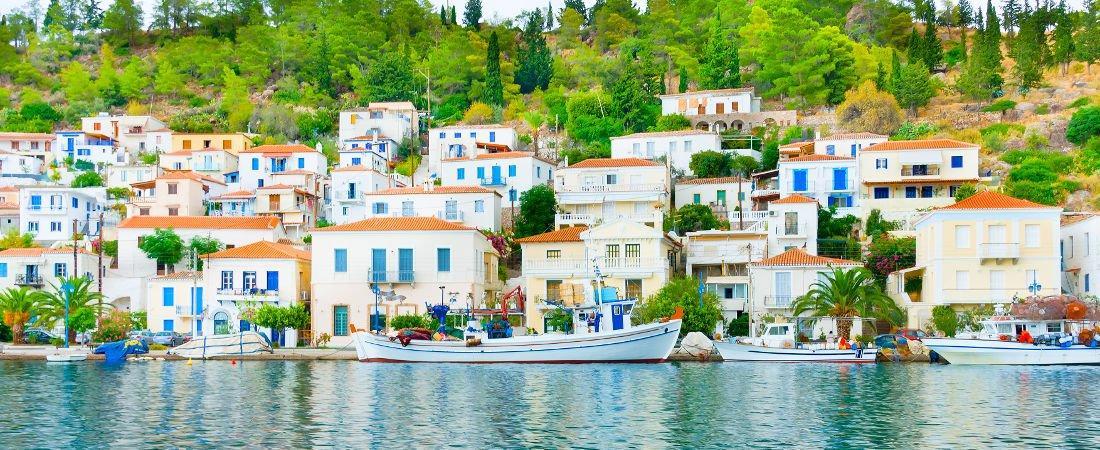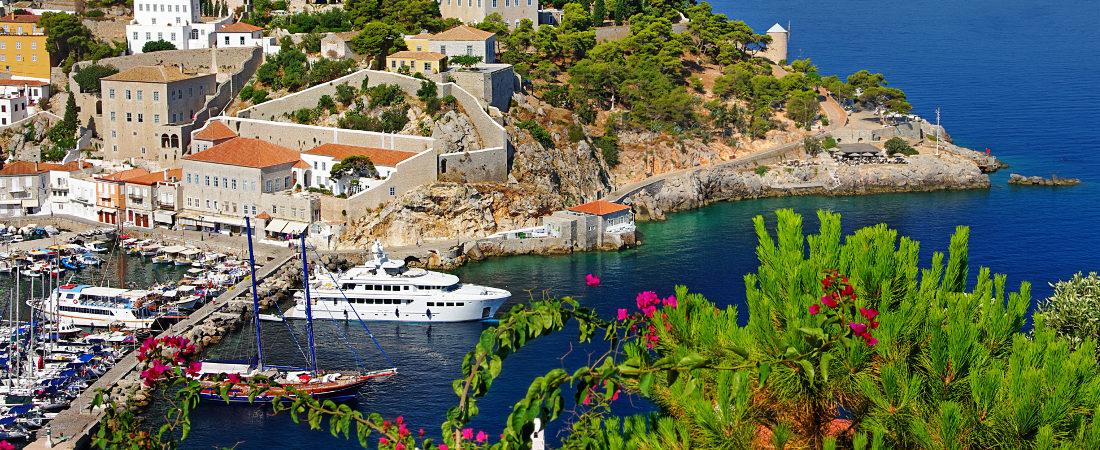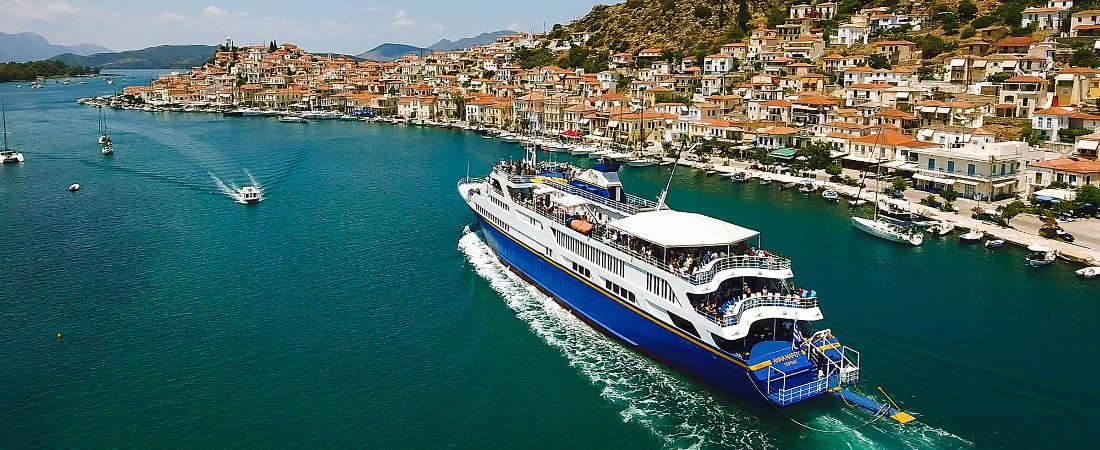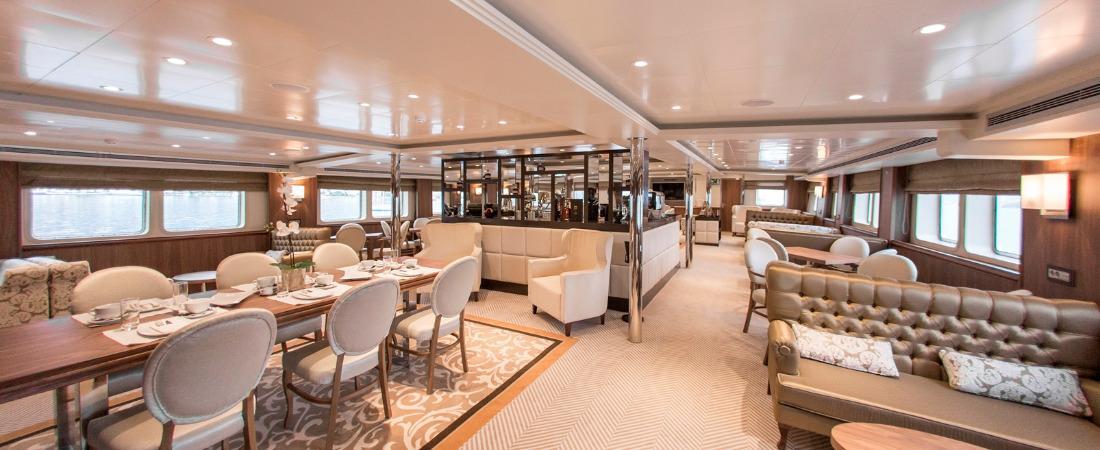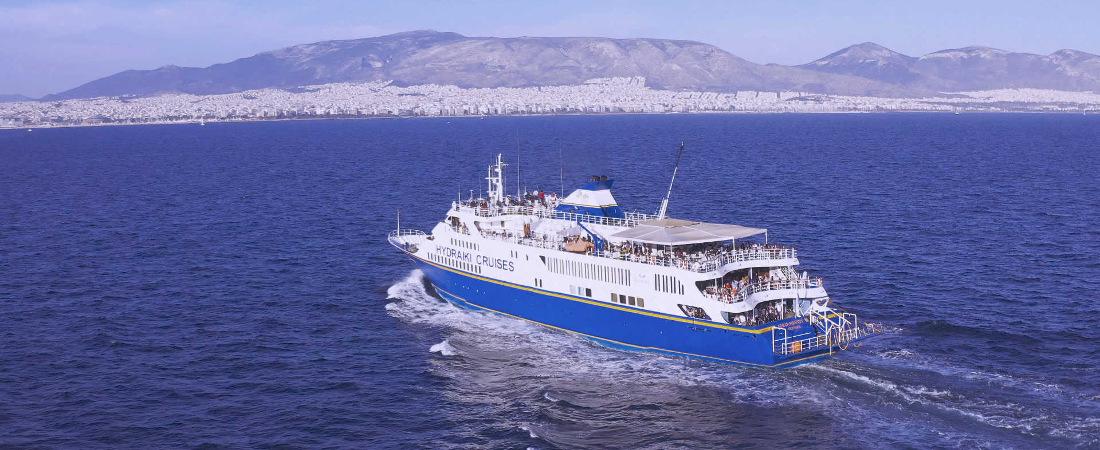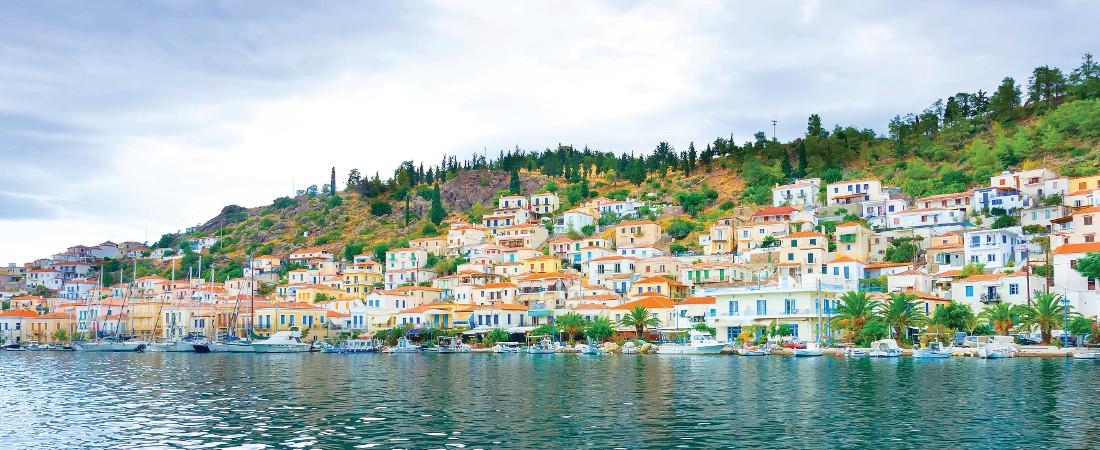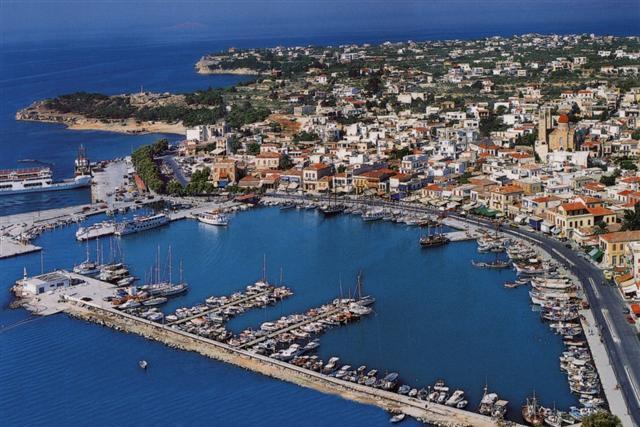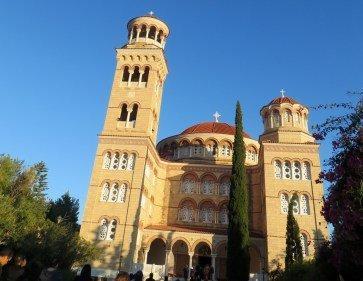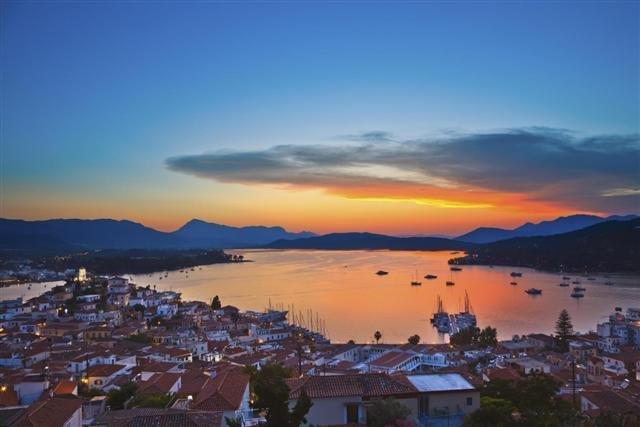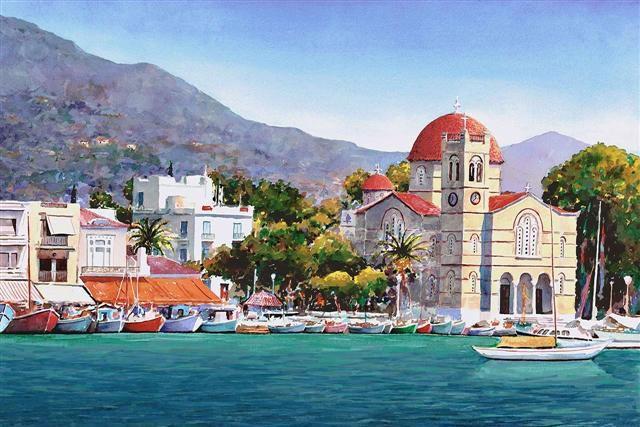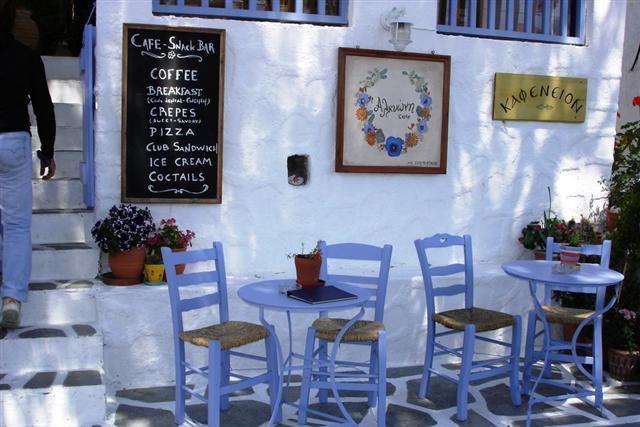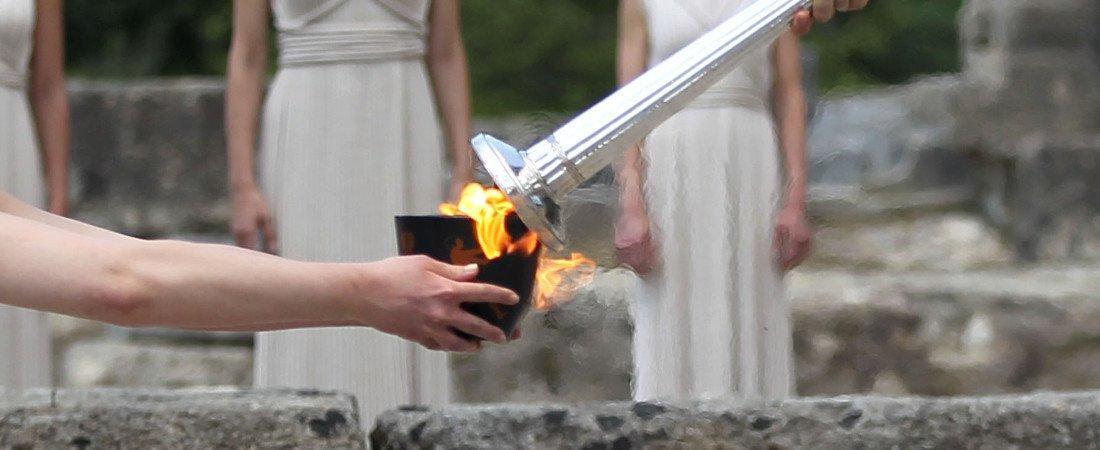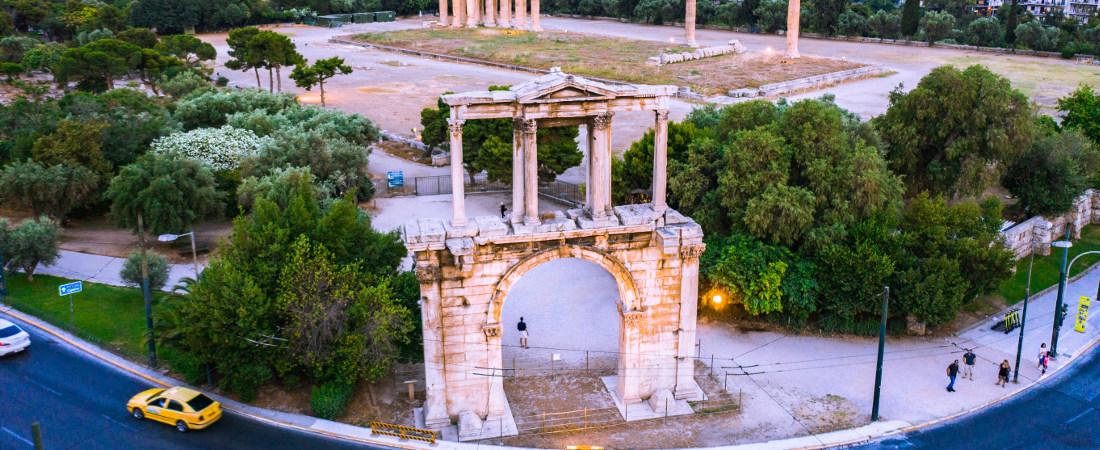qui
One Day Cruise To Aegina, Poros and Hydra Islands.
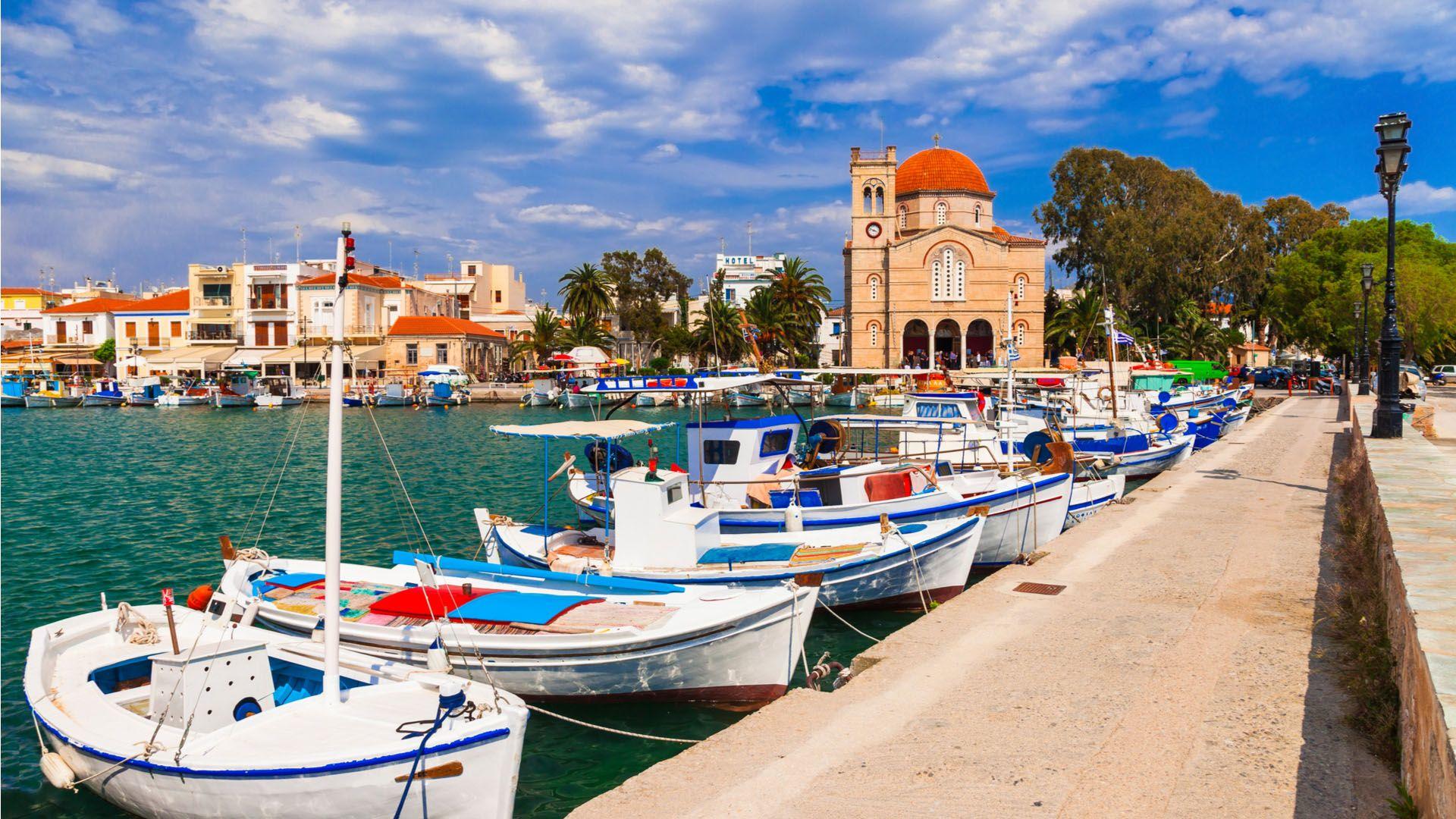 Aegina island
Aegina island
Aegina Island is one of the islands in the Saronic Gulf, just 17 miles (27 km) from Athens City. The capital is the town of Aegina (pop. 7,410 in 2001 census). It is situated at the northwestern end of the island. Due to its proximity to Athens, it is a popular quick getaway during the summer months. Quite a few Athenians own second houses on the island.
The town of Aegina has many attractions. A ride through the town with a horse carriage is a nice experience and a good way to enjoy the sights of the capital. The town has many interesting Buildings and Neoclassical Houses. Among them is the First Greek Government Building. Also, there is the Orphanage Building which was founded by the First Governor of Greece Ioannis Kapodistrias.
A glance
Aegina island was a rival to Athens City, the great sea power in antiquity.
During the 6th century BC, as an independent power, it was the first city in the western world to mint coins.
The capital of the island is the Town of Aegina (pop. 7,410 in 2001 census).
Due to its proximity to Athens City, it is a popular quick getaway during the summer months, with quite a few Athenians owning second houses on the island.
Fishermen, sailors, and shipbuilders are the usual professions on the island of Aegina.
Some are also farmers, and they grow olives, pistachio nuts, and fruit.
A ride through the town with a Horse Carriage is a nice experience and a good way to enjoy the sights of the capital of Aegina Island with its many Interesting Buildings and Neoclassical Houses.
The first governor of Greece Ioannis Kapodistrias founded the First Greek Government Building at the building of the Orphanage.
Myth and Legend
According to mythology, Aegina was a Beautiful Princess with whom God Zeus fell in love.
To be alone with her, he took her to this uninhabited island, and they had a son, Aeacus, who became the First King.
During the Neolithic period, the island was inhabited, as can be seen from the finds at Kolona, near the town of Aegina, which dates back to around 3000 BC.
Later, the Minoans came to the island of Aegina, to be followed by the Achaeans and the Dorians.
From the middle of the 2nd millennium BC, Aegina island began to develop its trade and at the same time emerged as a strong naval power. Ships carried the products of the island, chiefly ceramics, to the Cyclades, Crete, and mainland Greece. Ιt reached the zenith of its development during the 6th century BC, when, as an independent power, it was the First City of the Western world to mint coins.
Even though Aegina island was a rival of Athens City, it helped the Athenians in their victory against the Persian fleet at the Naval- Battle of Salamis.
After the important contribution of Aegina island to the struggle against the Turks in 1821, it became the seat of the First Greek Government, under Ioannis Kapodistrias.
Customers Looking to Book Also…
Athens One Day Cruise To Poros, Hydra, Aegina – All Inclusive VIP Class!
From: 310.00€ - Now: 285.00€
Day Cruise from Athens to 3 Islands – Poros, Hydra, Aegina
From: 155.00€ - Now: 130.00€
Athens One Day Cruise To Poros, Hydra, Aegina – All Inclusive VIP Class!
From:Day Cruise from Athens to 3 Islands – Poros, Hydra, Aegina
From:Because of its important position in antiquity (Aegina island was a rival to Athens City, the great sea power of the era) there are still Many Ancient sites to see. The most famous being the Temple of Athena Aphea from the 6th century BC.
Construction of historical sites
Surrounded by pine trees, on a hilltop above the town of Agia Marina, this Doric Temple, built around 490 BC, is the Best Preserved Classical Temple in the Greek islands.
Dedicated to the Cretan Nymph Aphea, it predates The Parthenon on The Acropolis of Athens City by around 60 years.
An equilateral holy triangle of temples is formed including The Temple of Aphea, The Parthenon and The Acropolis of Athens City and the Temple of Poseidon at Sounion.
A very interesting place to visit is the Monastery of Ag. Nektarios.
Ag. Nektarios himself is buried there and is also said to hold miraculous healing powers.
Additionally, very close to where Ag. Nektarios monastery is located, we find Palaechora Town. This is an abandoned Byzantine town.
Palaechora Town was once the Capital of Aegina Island. However, in this area, all that remains is the ruins of the deserted castle.
The house where Nikos Kazantzakis the editor of Zorba the Greek lived for some years is situated on Aegina island.
Temple of Aphea has an extremely beautiful setting, as is usually the case with places chosen by the Ancient Greeks for their Temples.
Together with The Temple of Poseidon at Sounion and The Parthenon on The Acropolis of Athens City, it forms an equilateral triangle.
Some thought that the sanctuary was dedicated to Hellenio Zeus, but after the Pedi mental sculptures were discovered it became apparent that it was dedicated to Goddess Athena.
Recent excavation history
Ever since further angler’s excavations in 1901, the established opinion has been that the sanctuary, as indicated by an inscription found in the Temple’s foundation, belonged to the Crete-Mycenaean Deity Aphea which said to be connected with the Minoan Deity Britomartis, a friend of Goddess Artemis. The Deity unwittingly provoked a burning passion in King Mitios, and while fleeing him, fell into the sea.
Some fishermen caught her and brought her to Aegina.
As soon as she was on the island, one of the fishermen pressed his advances upon her and she fled toward the woods of Goddess Artemis. After that, she suddenly disappeared from the face of the earth.
The islanders dedicated a Temple to her, the now Temple of Aphea and it is likely that the pre-Hellenic cult of Aphea, which came to Aegina from Crete, eventually merged with the cult of Goddess Athena.
It appears that the first Temple, to which belongs the inscription found in the foundations and now in the Aegina Museum, dates from the 7th century B.C.
Although it was a simple square building, there are only a few foundations of the altar remaining.
In the early 6th century B.C. a Temple with a three-aisled cella was on the same site.
Several architectural fragments from the Temple still survive, used as building material in later construction.
State of today
Today, the Temple of Aphea is one of the finest examples of Archaic Architecture. It is important to note that it was built in 490 B.C. Construction is made out of local poros in the peripteral Doric style with six columns on the short side and twelve columns on the long side.
A large door with Marble Pilasters led from the front porch to the cella, in which stood the gilded Ivory and Wood Statue of Goddess Aphea.
This space was divided by a double row of five columns into three aisles, which formed a two-storied stoa on the north, east, and south sides of the cella.
The coffered ceiling was decorated with golden stars, while the floor was covered with a thin red plaster. Traces of it can still be seen. A smaller door, probably built later since it is not on the axis of the Temple, leads to the rear porch.
To the right and left of it are two square marble blocks between two vertical slabs. Archeologists estimate they may have been offering tables. The entire surface of the Temple of Aphea was covered with a yellowish plaster, and some architectural parts like the cornice and the pediment tympana were colored.
Renovations
As soon as the Temple was complete, a New Altar was built outside to the east. Later, the sanctuary space was enlarged with isodomic retaining walls.
The Temple of Aphea and the Altar were surrounded by an enclosure with an entrance on the south side.
A new propylon was built, keeping roughly to the earlier plan and dimensions, with two galleries.
The interior room was larger and led down four steps to the courtyard.
Five large rooms and two galleries east of the propylon were the Priests’ Quarters.
All these buildings were surrounded by an enclosure with an entrance in the south.
Further south, below the sanctuary entrance, are the foundations of a three-roomed house which probably served as a guest house.

